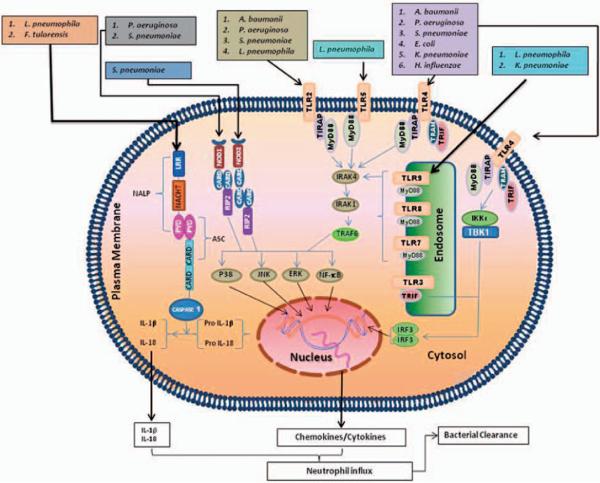Fig. 1.
Respiratory pathogens are recognised by membrane bound and cytoplasmic pattern recognition receptors. Plasma membrane-bound TLRs (TLR2, TLR4 and TLR5) and endosome membrane-bound TLRs (TLR3, TLR7, TLR8 and TLR9) recognise bacterial pathogens in the lungs. TLR2, TLR4, TLR5, TLR6, TLR7 and TLR9 recruit MyD88 whereas TLR2 and TLR4 recruit both TIRAP and MyD88. TLR3 and TLR4 recruit TRIF to induce downstream signalling cascades. Binding of pathogens and/or PAMPs to TLRs leads to complex signalling cascades, which result in transcription of pro-inflammatory mediators and activation of MAP kinases. Cytosolic NODs recognise bacterial pathogens in the lung and mediate signalling via RIP2, whereas NALPs use ASC to induce signalling cascades, which result in transcription of pro-inflammatory mediators and activation of MAP kinases. These pro-inflammatory mediators, including chemokines, recruit neutrophils to the lung in order to clear the causative organism during bacterial infection.

